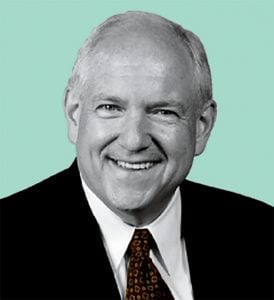 When it comes to financial affairs, most of us echo the sentiment expressed by J. Wellington Wimpy in the old Popeye cartoons. (Photo: Shutterstock)
When it comes to financial affairs, most of us echo the sentiment expressed by J. Wellington Wimpy in the old Popeye cartoons. (Photo: Shutterstock)
“I'd gladly pay you Tuesday for a hamburger today.” When it comes to financial affairs, most of us echo the sentiment expressed by J. Wellington Wimpy in the old Popeye cartoons. We look for gratification today at the expense of our future.
Financial wellness is one of the most talked about emerging employee benefits, so we started doing some research into the opportunity with our employer advisory panel. We found that in the abstract, everyone agreed that financial wellness is a good idea. But when we dug deeper, we found there was little consensus about the definition of a successful financial wellness program.
Related: How to design financial wellness benefits that are relevant to employees
 Marty Traynor is vice president of voluntary
Marty Traynor is vice president of voluntarybenefits at Mutual of Omaha.
Reducing employee stress is one of the key functions of employee assistance programs (EAPs), so I discussed financial wellness services with Nancy Cannon, manager of our EAP. Nancy observed that financial wellness is attractive and valuable to both employers and employees. Employers benefit by having more productive employees due to reduced financial stress on both employees and their family members. Workplace distractions and presenteeism are reduced. “Employees with financial issues can really struggle at work, sapping their own focus, spending valuable work time focused on their problems, and harming workplace culture,” Cannon said.
Many of the issues presented to EAP counselors are rooted in financial challenges. Calls for assistance tend to be described as something else—marital issues, family discord, substance misuse issues and so on. But once counselors begin discussing the problem with the member, financial issues might emerge as a major underlying driver. For example, an employee having performance issues or absenteeism may be having problems paying for necessities like transportation and child care.
Financial wellness initiatives are designed to help people change their financial behavior, but that takes time and commitment by both employers and members. There are two challenges a successful financial wellness program must address: utilization and engagement.
In building utilization, the privacy of the program is important. Employees will be much more likely to use the program if they feel safe, knowing their identity and information is confidential.
Employees don't want their employer to know they have financial trouble. Utilization can be built by education and awareness programs generated by a collaboration between the benefit provider and the employer. Topics should be relevant to the variety of generations in the workforce, from college loan management to pre-retirement planning and everything in between. A successful program should have videos, calculators, personal stories, whitepapers and coaching options available online, via mobile, telephonic or face-to-face access.
Employees stay engaged when they can see progress and small successes. Gamified contests with employer-funded incentives can raise awareness and provide regular wins that urge users to continue. Building financial wellness will not take place overnight. Paying back college loans, reducing credit card debt, learning to budget effectively, and saving for the future all can take a great deal of time.
In closing, Nancy Cannon observed, “Employers need to understand the impact our 'buy now-pay later' culture can create. Implementing a financial wellness program is virtually no risk for either employer or employee and each has a lot to gain.”
Hungry for more?
© 2025 ALM Global, LLC, All Rights Reserved. Request academic re-use from www.copyright.com. All other uses, submit a request to [email protected]. For more information visit Asset & Logo Licensing.







